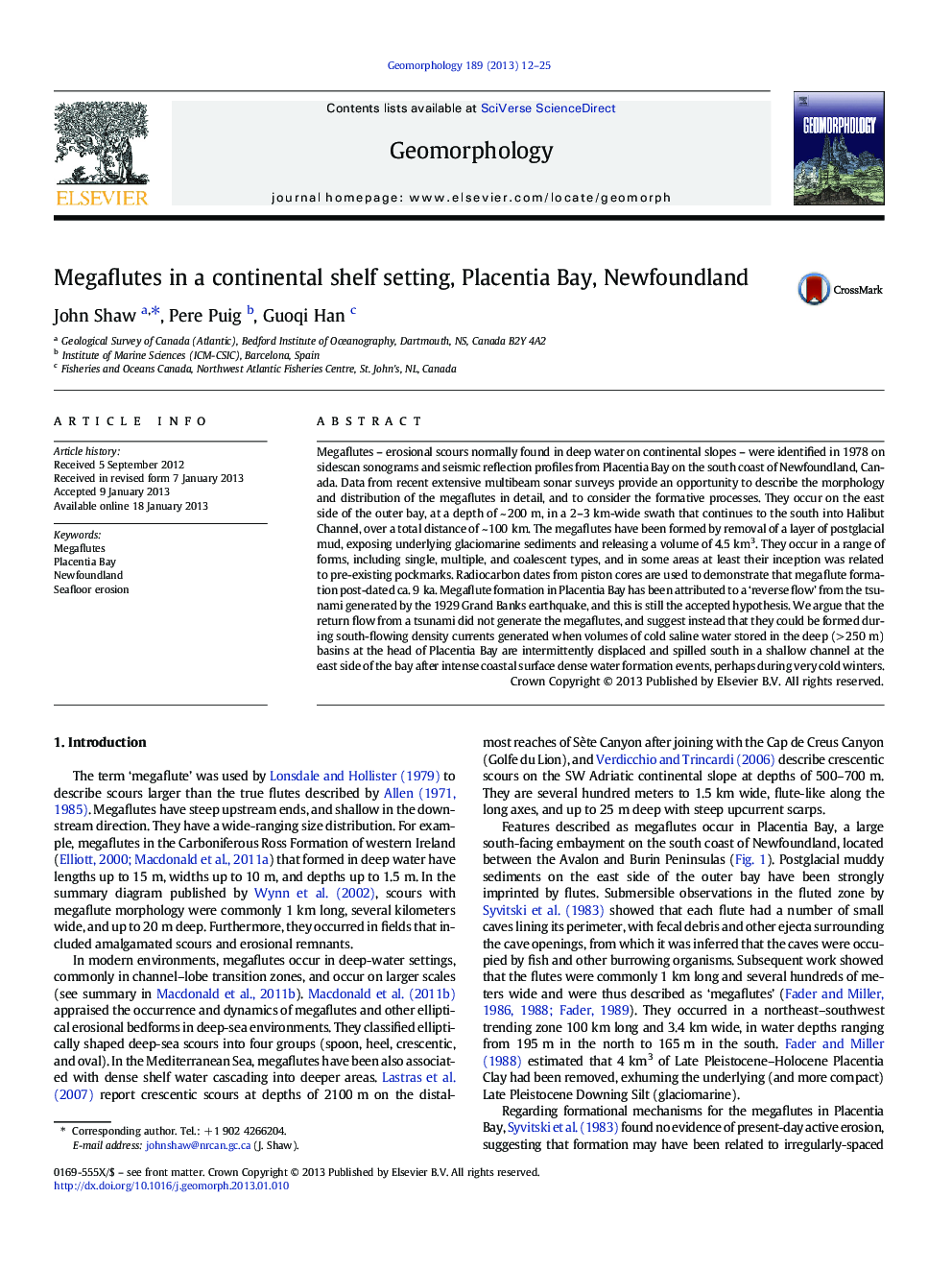| Article ID | Journal | Published Year | Pages | File Type |
|---|---|---|---|---|
| 4684909 | Geomorphology | 2013 | 14 Pages |
Megaflutes – erosional scours normally found in deep water on continental slopes – were identified in 1978 on sidescan sonograms and seismic reflection profiles from Placentia Bay on the south coast of Newfoundland, Canada. Data from recent extensive multibeam sonar surveys provide an opportunity to describe the morphology and distribution of the megaflutes in detail, and to consider the formative processes. They occur on the east side of the outer bay, at a depth of ~ 200 m, in a 2–3 km-wide swath that continues to the south into Halibut Channel, over a total distance of ~ 100 km. The megaflutes have been formed by removal of a layer of postglacial mud, exposing underlying glaciomarine sediments and releasing a volume of 4.5 km3. They occur in a range of forms, including single, multiple, and coalescent types, and in some areas at least their inception was related to pre-existing pockmarks. Radiocarbon dates from piston cores are used to demonstrate that megaflute formation post-dated ca. 9 ka. Megaflute formation in Placentia Bay has been attributed to a ‘reverse flow’ from the tsunami generated by the 1929 Grand Banks earthquake, and this is still the accepted hypothesis. We argue that the return flow from a tsunami did not generate the megaflutes, and suggest instead that they could be formed during south-flowing density currents generated when volumes of cold saline water stored in the deep (> 250 m) basins at the head of Placentia Bay are intermittently displaced and spilled south in a shallow channel at the east side of the bay after intense coastal surface dense water formation events, perhaps during very cold winters.
